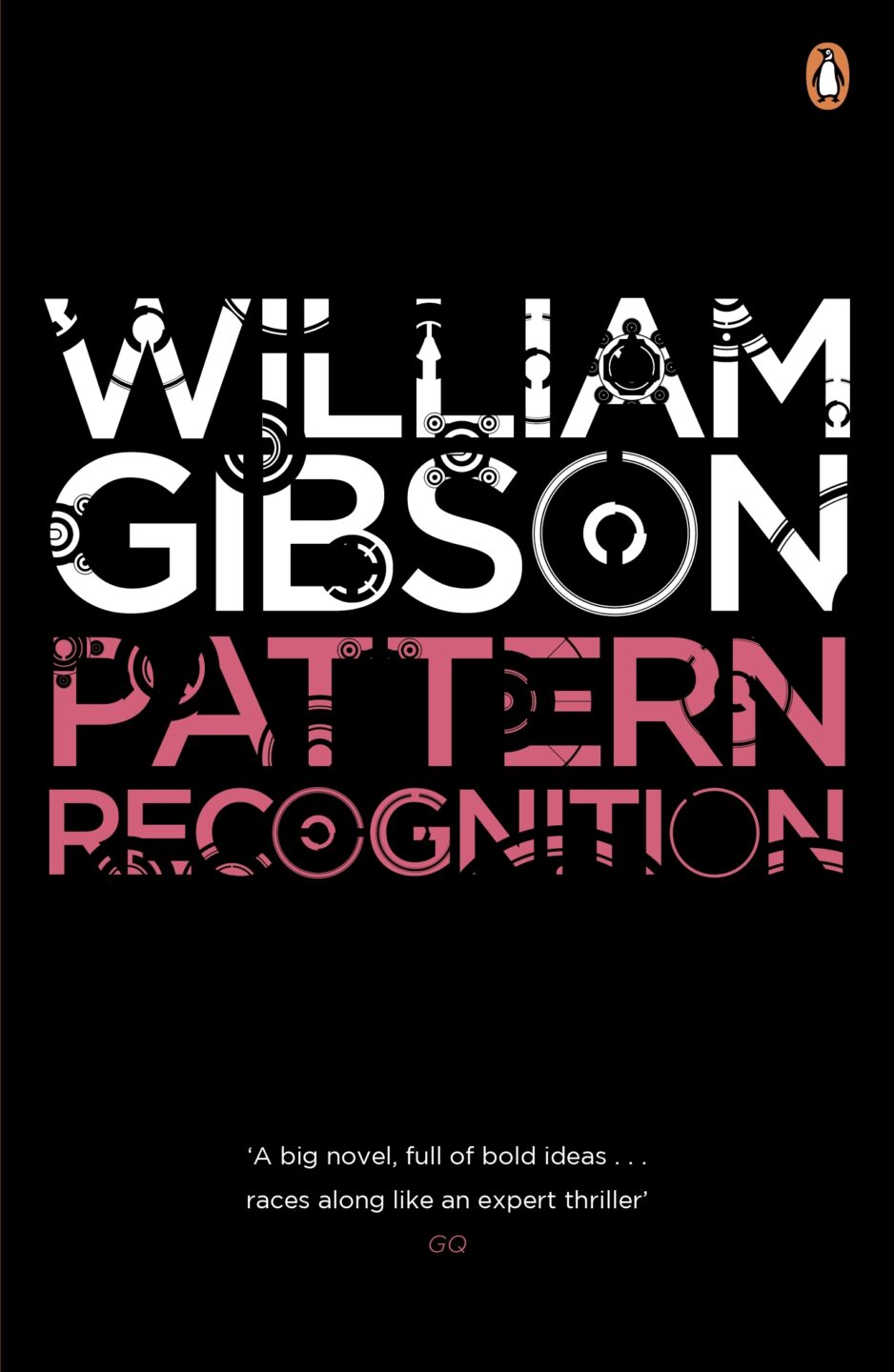The DECODER series — to which SEMIOVOX has invited our semiotician colleagues from around the world to contribute — explores fictional semiotician-esque action as depicted in books, movies, TV shows, etc.
I discovered William Gibson’s work through the 1986 story “The Winter Market,” then the 1984 novel Neuromancer. To this day, I love the cyberpunk sub-genre of sf that he helped invent. Plus, he’s Canadian! His non-cyberpunk novel Pattern Recognition (2003), though, holds a special place in my heart — because its protagonist, Cayce Pollard, is a commercial semiotician.
Pattern Recognition begins by establishing Cayce as a freelance marketing consultant with a peculiar semiotic ‘sensitivity’ — although “the truth… is closer to allergy, a morbid and sometimes violent reactivity to the semiotics of the marketplace.” She does a certain amount of what in the late twentieth century we called cool-hunting, but one of her specialties is to simply look at draft brand logos and offer a single-word assessment of their potential.
Like so:
Dorotea removes an eleven-inch square of art board from the envelope. Holding it at the upper corners, between the tips of perfectly manicured forefingers, she displays it to Cayce.
There is a drawing there, a sort of scribble in thick black Japanese brush, a medium she knows to be the in-house hallmark of Herr Heinzi himself. To Cayce, it most resembles a syncopated sperm, as rendered by the American underground cartoonist Rick Griffin, circa 1967. She knows immediately that it does not, by the opaque standards of her inner radar, work. She has no way of knowing how she knows. […]
“No,” she says.
Cayce’s contract for a consultation of this sort specifies that she absolutely not be asked to critique anything, or provide creative input of any sort. She is only there to serve as a very specialized piece of human litmus paper.
Wow. When I encountered this passage, I was three years into my career as a commercial semiotician, and this pretty much captured my absolute dream job of all time. The fee that Cayce is paid for this single word isn’t cited, although since she’s been flown first-class from NYC to London (UK) for it, we imagine that she was paid an extraordinary amount. (Gibson takes pains to describe the global design fallout of her negative adjudication.) For a single word of assessment. No explanation, no justification, no ‘proof’, no qualification, no footnotes — just a single word, the end.
I had recently gone through the opposite experience, offering what I earnestly believed to be a thoughtful cultural assessment of the pop-culture etymology of a well-known gaming console brand logo, only to face a red-faced, sputtering Vice President of Finance declaring that this whole semiotics thing was “mental masturbation” before bustling out of the room. (It’s one of my favourite work stories; my apologies to those colleagues who have heard it before). So Gibson’s story about a semiotician whose perspective was valued and respected was a reassuring tonic.
I was immediately enthralled with Cayce Pollard, and the story only got better from there. The plot unfolds around her true passion, which is trying to decode semioticially complex fragments of a mysterious film anonymously uploaded to the internet. Although on the surface, Pattern Recognition may be a cyber-thriller sprinting through exotic global locations and relentless enumerations of pop-culture signifiers and their signifieds, underneath it’s an unforgettable fever-dream meditation on Barthes’ ‘third meaning.’
As for the other, third meaning, the one which appears “as extra,” as a supplement my intellection cannot quite absorb, a meaning both persistent and fugitive, apparent and evasive…
Roland Barthes, “The Third Meaning: Research Notes on Some Eisenstein Stills” (1970)
Hunting the third meaning was the passion that drove me through all my graduate degrees, and inspires me to this day. Cayce Pollard will always be my hero/ine.
DECODER: Adelina Vaca (Mexico) on ARRIVAL | William Liu (China) on A.I. ARTIFICIAL INTELLIGENCE | Tim Spencer (England) on VURT | Ramona Lyons (USA) on BABEL-17 | Rachel Lawes (England) on NICE WORK | Alfredo Troncoso (Mexico) on THE ODYSSEY | Gabriela Pedranti (Spain) on MUSIC BOX | Charles Leech (Canada) on PATTERN RECOGNITION | Lucia Laurent-Neva (England) on LESSONS IN CHEMISTRY | Whitney Dunlap-Fowler (USA) on THE GIVER | Colette Sensier (England / Portugal) on PRIESTDADDY | Jamin Pelkey (Canada) on THE WONDER | Maciej Biedziński (Poland) on KOSMOS | Josh Glenn (USA) on LE GARAGE HERMÉTIQUE | Antje Weißenborn (Germany) on BABYLON BERLIN | Ximena Tobi (Argentina) on SIX FEET UNDER | Mariane Cara (Brazil) on ROPE | Maria Papanthymou (Greece) on MY FAMILY AND OTHER ANIMALS | Chirag Mediratta (India) on BLEACH | Dimitar Trendafilov (Bulgaria) on THE MATRIX | Martha Arango (Sweden) on ONE HUNDRED YEARS OF SOLITUDE | Becks Collins (England) on THE HITCHHIKER’S GUIDE TO THE GALAXY | Ivan Islas (Mexico) on THE NAME OF THE ROSE | Paulina Goch-Kenawy (Poland) on THE SENSE OF AN ENDING | Eugene Gorny (Thailand) on SHUTTER ISLAND & FRACTURED.
Also see these global semio series: MAKING SENSE (Q&As) | SEMIOFEST SESSIONS (monthly mini-conferences) | COVID CODES | SEMIO OBJECTS | COLOR CODEX | DECODER (fictional semioticians) | CASE FILE | PHOTO OP | MEDIA DIET.


